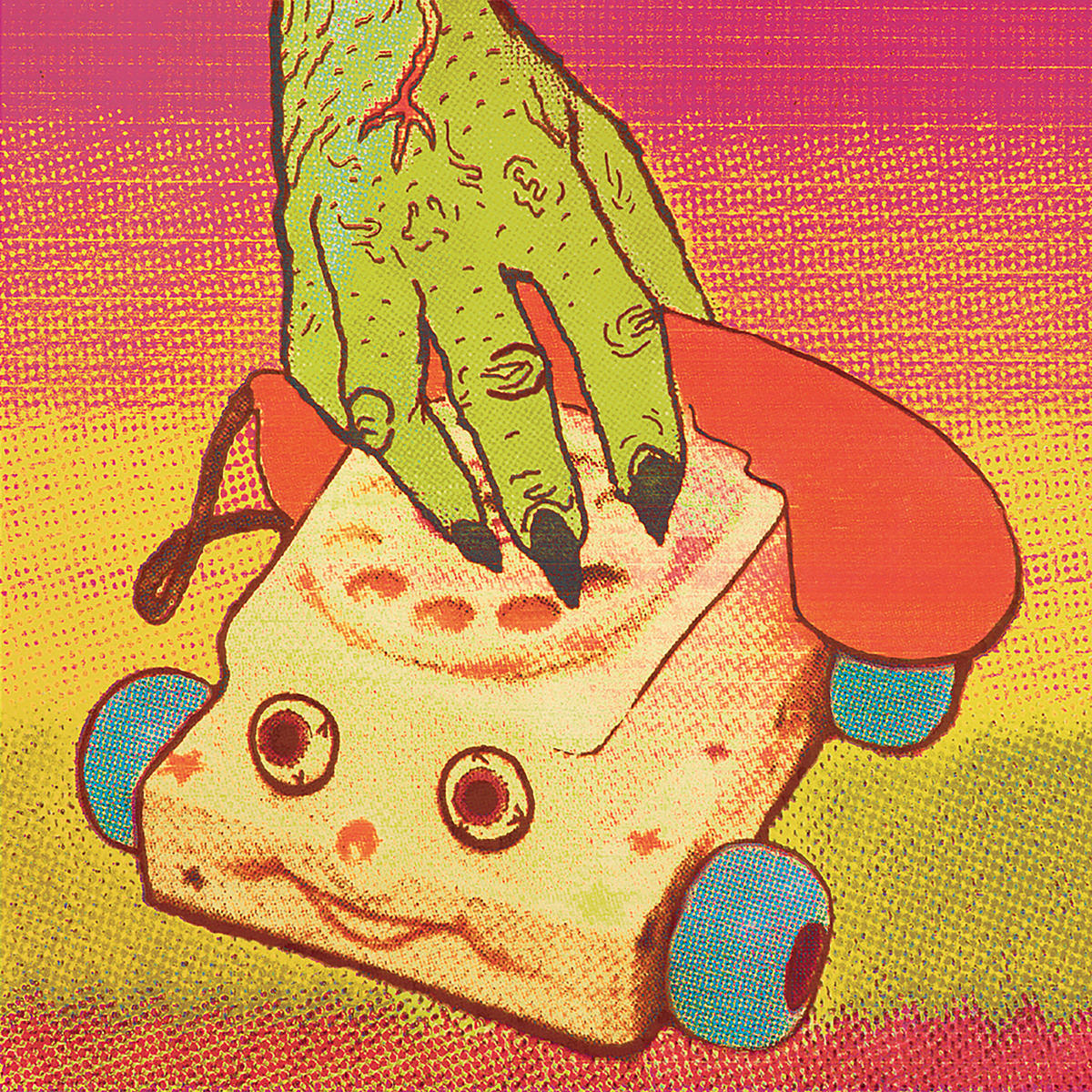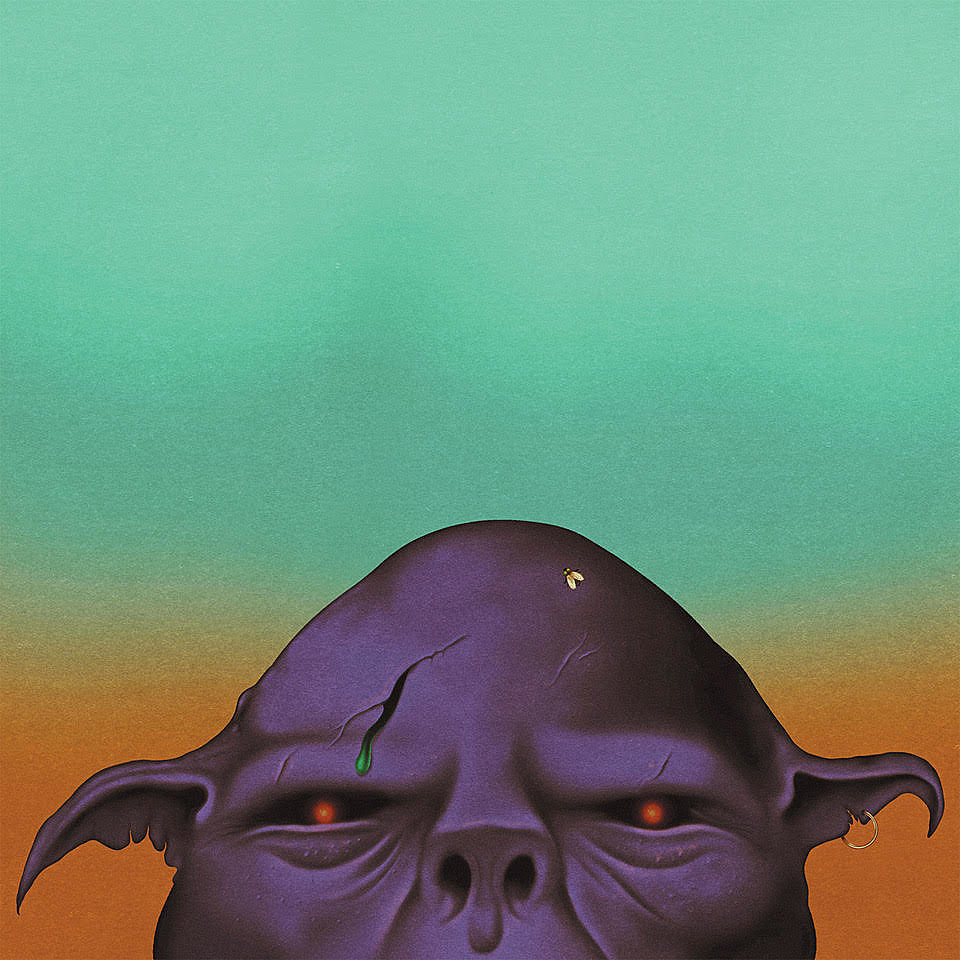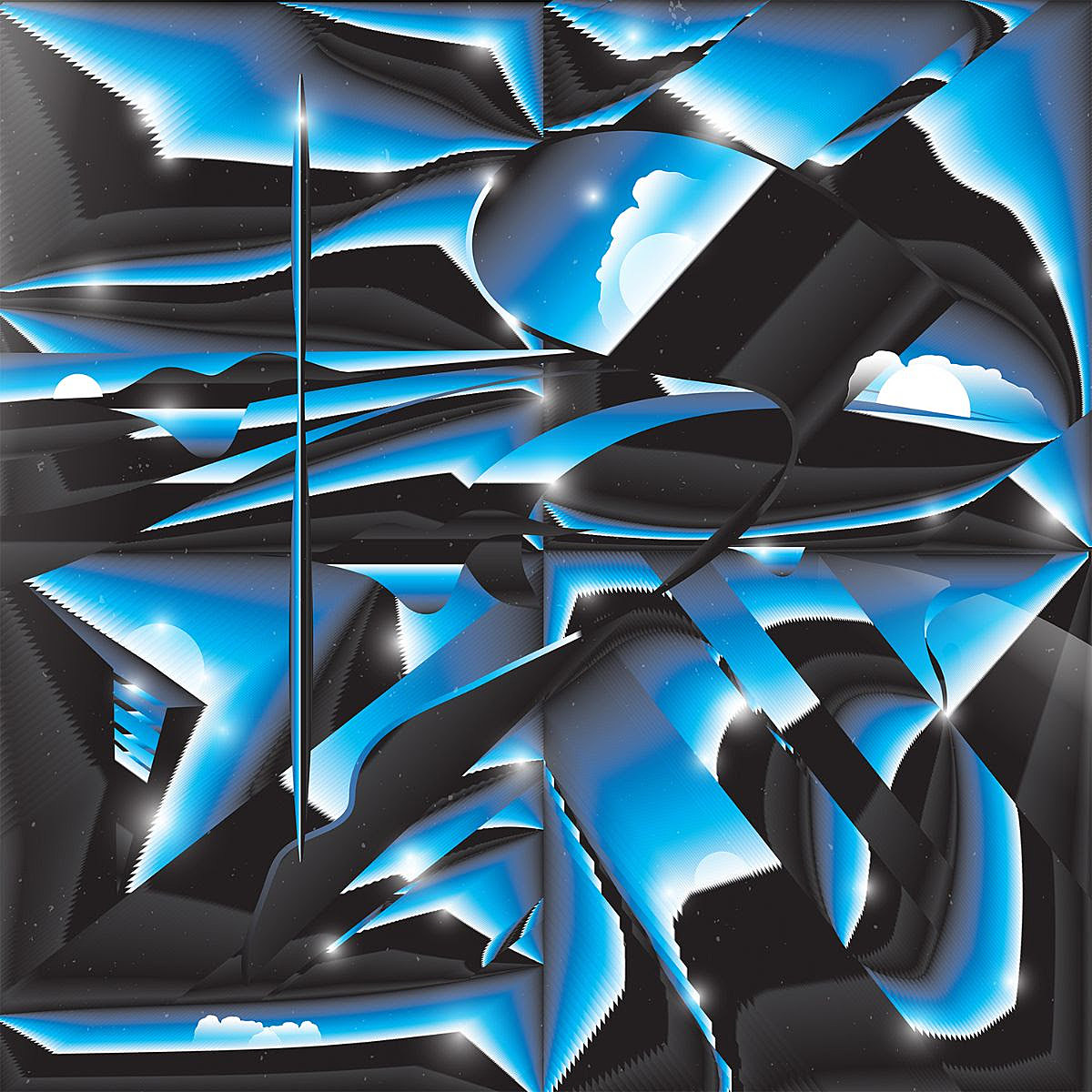
Oh Sees album guide: their 11 best records
Originally posted in December 2020, this list has been updated and expanded as Oh Sees’ catalog has kept growing
John Dwyer has been making music with some form of the name Oh Sees since 1997, beginning with Orinoka Crash Suite that became OCS, then The Ohsees, Thee Oh Sees, Oh Sees, and most recently, OSEES. He’s had an equally dizzying number of lineups of the band over the years, incorporating weirdo folk, garage rock, chamber psych, space rock, prog, krautrock, punk jazz, metal, and more into their sound. The band are probably known best for three intertwined things: their sweaty, frenzy-inducing live shows, relentless touring, and an extremely prolific recorded output. Depending on how you count, as of September 2023, there are around 27 albums and even more 7″s, 10″s, EPs, splits and more (around 88 records total under some variation of the Oh Sees name).
Having morphed, expanded, contracted and expanded again so many times over the last two decades it’s a bit tough to rank Oh Sees albums, but you can make sense of their enormous discography through 11 of their best, so that’s what we’ve done here. In addition to these records, which are a great place to start, we’ve also offered related releases for those who want to dive deeper into Dwyer’s domain.

Thee Oh Sees – Help (2009)
While John Dwyer used variations of the OCS/Oh Sees name for a decade, it was in 2008 where a lineup — bassist Petey Dammit, drummer Mike Shoun and keyboardist/vocalist Brigid Dawson — really took hold, and the livewire, blown-out garage-psych sound took shape. While The Master’s Bedroom Is Worth Spending a Night In was a lot of people’s introduction to Thee Oh Sees’ world, its follow-up was the group’s first great record. A descending guitar line drops like a timer into the explosion of “Enemy Destruct,” Help‘s opening track, and you’re hooked immediately. The momentum keeps going with the record’s hit, “Ruby Go Home.” It’s not all revved-up bangers, though, as the band make room for Brit invasion-style pop like “Flag in the Court” and sweet closer “Peanut Butter Oven.” It’s interesting to listen now, just a decade later, to a record that seemed pretty wild at the time but now seems somewhat quaint compared to the sounds Dwyer is currently making.
OH SEE ALSO: The Master’s Bedroom Is Worth Spending a Night In is pretty terrific too, and the band’s early, sweaty showspace reputation was captured on live album The Hounds of Foggy Notion, which was recorded around the same time as 2007’s Sucks Blood. Immediately after Help came Warm Slime whose title track is a purposefully lengthy jam in the spirit of Can’s “Yoo Doo Right” and Iron Butterfly’s “In-A-Gadda-Da-Vida.”
—

Thee Oh Sees – Castlemania (2011)
The first of two Thee Oh Sees albums released in 2011 marks a turning point for John Dwyer and the San Francisco DIY community he flourished in, as it was “the last record worked on at 608 c haight street in san francisco (very near and dear to my heart and heavy in my memories) before control was assumed by rich assholes.” Primarily made by Dwyer on his own, with contributions from Dawson (the only other Oh Sees member to play on it), Ty Segall, and The Fresh & Onlys’ Heidi Gardner, Castlemania dives into chamber psych and folk pop, making it one of the most tuneful albums in the Oh Sees catalog. If there was any doubt about the direction of the album, he ends it with covers of songs by The West Coast Pop Art Experimental Band, The Creation and Norma Tenaga. The playful arrangements put Dwyer’s multi-instrumentalist talents (flute, clarinet, trumpet, plus lots of mellotron keyboard) to full use, bringing “I Need Seed,” “Corrupted Coffin,” and “Blood On The Deck” to technicolor life, while his affected, somewhat sinister vocal delivery keeps things druggily demented.
OH SEE ALSO: 2009’s Dog Poison is Thee Oh Sees gone acoustic but no less wild.
—

Thee Oh Sees – Carrion Crawler/The Dream (2011)
2011 also saw Thee Oh Sees expand their lineup to include The Intelligence’s Lars Finberg, who was brought in primarily as a second drummer but also as a guitarist. You can feel the extra wallop Finberg brings to the band on Carrion Crawler/The Dream, a record that also benefits from the well-oiled, constantly gigging band recording live to tape (“1, 2, 3, press record, go,” according to Petey Dammit). This is Thee Oh Sees’ first album to both capture the intensity of one of their live shows on record, and record it with a fidelity most of the previous records lack. Centerpiece to the album is “The Dream,” a seven minute motorik groover that absolutely smokes and remains their most-played song live. The krautrock influence, which would become more predominate on albums later in the decade, also rears itself earlier in the album on a track that fuses stabbing original “Contraption” with a cover of Can’s debut single, “Soul Desert.” As for “Carrion Crawler,” the other half of the album’s title, it’s a psych-garage burner that takes its name from a centipede-like Dungeons & Dragons monster. This will not be the last time D&D pops up in Os Sees’ catalog.
OH SEE ALSO: The Finberg-enhanced Oh Sees toured with Australia’s Total Control in 2011 and released a terrific split 12″ with each group contributing four songs.
—

Thee Oh Sees – Putrifiers II (2012)
Following the recorded-live Carrion Crawler/The Dream, John Dwyer explored the studio as an instrument, making an almost entirely one-man-band Thee Oh Sees album with regular engineer Chris Woodhouse as chief collaborator/contributor, plus a little vocal help from Dawson and Heidi Alexander, and saxophone from Mikal Cronin. It’s the same approach as Castlemania, but sounding more in big, band style, using thick, bassy guitars that recall Brian Eno’s Here Come the Warm Jets, with other mid-’70s glam elements popping up throughout the record. The shuffle-beat “Hang a Picture” is one of Oh Sees’ meatiest, catchiest singles ever, though “Floods New Light,” with handclaps on the “bah bah bah” chorus and killer sax from Cronin, is up there too. Dwyer calls Putrifiers II an EP, but at 10 songs and 37 minutes it’s as much an album as anything in their discography. What’s not in question is that it’s one of Dwyer’s best records, arguably the best. Putrifiers II also marked the last Oh Sees album to be released by L.A. label In the Red. In Dwyer would take things in-house via his own Castle Face label from here on out.
OH SEE ALSO: If you’re wondering, there is no Putrifiers I but one of Dwyer’s old groups, Yikes, had a song with that title on their 2006 album Secrets to Superflipping. The Australian edition of Putrifiers II came with a bonus disc featuring 10 demos.
—

Thee Oh Sees – Floating Coffin (2013)
Where most Oh Sees albums up to this point featured John Dwyer coming in with songs already written, 2013’s Floating Coffin was created as a band, taking a few extra days in the studio to write on the fly. Though he hadn’t been able to tour with them since 2011, Lars Finberg once again joined them as second drummer and, driven by that three-part rhythm section, this is one of the jammier Oh Sees records to date, heavy on the heavy zone-outs and punctuated by some especially ripping solos alongside Dwyer’s signature shrieks and whoops. (See: “Toe Cutter/Thumb Buster,” “Maze Fancier” and “Sweet Helicopter.) Floating Coffin not only marks the first album with Castle Face as their permanent home, it’s also the swan-song for the Pete Dammit/Mike Shoun lineup of the group. At an end-of-year show at S.F.’s Great American Music Hall, Dwyer announced it would be “the last Oh Sees show for a long while,” and that the band were going on “indefinite hiatus.” Dwyer moved to L.A. and Dawson moved to San Marin, with Dammit and Shoun staying in the Bay Area. “A long while” was a relative term, though, with a new album coming just a few months later, and a new lineup of the band playing shows not long after that.
OH SEE ALSO: 2014’s Moon Sick EP features four songs from the Floating Coffin sessions that didn’t make the album.
—

Thee Oh Sees – Drop (2014)
The in-betweener album. With the previous lineup gone, Dwyer and Chris Woodhouse played everything on Drop, save some saxophone (Mikal Cronin again), recording at Sacramento, CA’s The Dock which was — fun fact — previously a banana-ripening warehouse. It sounds like a record between worlds, the garage-rock one that had been San Francisco and the proggier direction Dwyer would take Thee Oh Sees after moving to L.A. Things open with “Penetrating Eye,” one of their heaviest riffs to date, and it’s followed by two of their best: the slinky, one-chord jam “Encrypted Bounce” and “Savage Victory” which falls somewhere between Can and paisley acid rock. They keep the krautrock grooves going on “Put Some Reverb On My Brother” (shades of “I’m So Green”), while the title track shows that few make catchy garage rock rippers like Dwyer. Drop concludes with three songs that take Oh Sees into baroque/prog territory — “Transparent World” and Beatlesque album-closer “The Lens” are especially great — that they’ve never really dabbled in before or since. At least yet.
OH SEE ALSO: 2013’s Singles Collection 3 compiles loose odds-and-ends; 2014 also saw the release of Dwyer’s first solo album as Damaged Bug.
—

Thee Oh Sees – Mutilator Defeated At Last (2015)
Though he was fully settled in Lala Land, Dwyer hadn’t quite figured out the new lineup of the Oh Sees yet, but he was getting there, adding bassist Tim Hellman, who is still in the group today, and White Fence drummer Nick Murray. This trio, who toured for Drop, ushered in an unabashedly highly technical Oh Sees, heading deeper into krautrock and prog galaxies. Not unlike Floating Coffin, Mutilator Defeated at Last is very jammy but is heavier and more out-there than anything Dwyer had made so far. The album is so rhythm-forward it sounds like Dwyer knew he wanted a two drummer lineup again, and when Murray bowed out after making the record, Ryan Moutinho and Dan Rincon (who’s still in the band) took his place. You can hear it right out of the gate with perhaps the best one-two punches in the Oh Sees discography: the clattering “Web” and absolute scorcher “Withered Hand.” Hellman makes a huge difference too; Pete Dammit played guitar put through pedals to simulate a bass, but Hellman gives them a big, fat bottom end. It’s hard to imagine a track like closer “Palace Doctor” before this. Oh Sees sound massive here, but they would continue to expand their universe.
OH SEE ALSO: Moutinho and Rincon made their debut on A Weird Exits and companion album An Odd Entrances which came out within a few months of each other in the latter half of 2016. Both are good, but the group seemed like they were still feeling each other out. 2016 was an especially prolific year for the band, with excellent stand-alone single “Fortress” (which featured Nick Murray on drums) and the “Live in San Francisco” LP also out.
—

Oh Sees – Orc (2017)
After 10 years using the same variant on their name, 2017 saw John Dwyer drop the “Thee,” shortening it to just Oh Sees (which is what a lot of people called them already). While the spelling of their name contracted, Oh Sees got bigger, sonically. Paul Quattrone took over the second drummer seat vacated by Ryan Moutinho and alongside Paul Rincon, and he was the missing piece. The second great lineup of the band was born. Co-produced by Ty Segall, Orc is the first album of Oh Sees’ two drummer era where you can really feel both at work, with Quattrone in the left channel and Rincon on the right, complimenting each other, propelling the band like never before. Like the monster it’s titled after, (more D&D/LOTR fantasy) Orc is a beast of an album, dabbling in metal and jazz in addition to the heavy prog direction they’d been heading in since leaving the garage. (Some definite Pink Floyd vibes this time around.) Blasting out of the gate with “The Static God,” Orc goes on an incredible five song run that makes up the first disc of this two-LP set, including the prog-wave jam “Nite Expo” and the incendiary “Jettison.” The remaining five songs are no slouches either (“Drowned Beast” is a knockout), all taking Oh Sees in new, wigged-out directions.
OH SEE ALSO: Following Orc, Oh Sees would expand to a quintet with keyboardist Tomas joining full time. That lineup made 2018’s doomy Smote Reverser (which has arguably their best cover art) and the jazz-infected Face Stabber, both of which went much further out than Orc and could use a little trimming, especially Face Stabber (80 minutes!).
—

OCS – Memory of a Cut Off Head (2017)
Just a few months after the release of Orc, Dwyer reverted back to the original OCS incarnation of his band’s name for their 20th studio album. In keeping with those early-’00s records, Memory of a Cut Off Head is decidedly quiet, and reunites him with his OCS collaborator Patrick Mullins on singing saw and electronics. But where the other records under the OCS banner were very, very low-fi, Memory of a Cut Off Head is gorgeously produced and arranged orch-pop that could only have been created after Dwyer made records like Drop and Mutilator Defeated At Last. The album, which was Castle Face’s 100th release, was also an opportunity to work with Brigid Dawson again. She’d sung backup on many Oh Sees albums since she quit being a full-time member of the band, but this is a full-blown collaboration between them, from co-writing all the songs together to sharing lead vocals. With lush string and horn arrangements — very Summer of Love — it’s a unique, gorgeous album in Dwyer’s catalogue.
OH SEE ALSO: The three early-’00s OCS albums are borderline ambient but are worth checking out. Dwyer and Dawson played special OCS shows in San Francisco, L.A. and Brooklyn with string sections, and the S.F. shows became a 2018 live album.
—

OSEES – Protean Threat (2020)
Now onto a sixth variation on their name, Protean Threat is their first album as OSEES, but the slight rebranding does not so much herald a change in musical direction as much as it offers a refinement and combination of the doom leanings on 2017’s Smote Reverser and jazz/prog workouts of 2019’s Face Stabber. Clocking in at a lean 39 minutes, Dwyer and co still make you feel like you’ve run a marathon, perhaps while on hallucinogens. Domas’ keyboards bring a spazzy, proto-new-wave element to the band (“Dreary Nonsense”), while Hellman,Quattrone and Rincon amp up that Can/Neu! groove. Everything just feels tighter and dialed in; there’s still plenty of weirdo jamming, out-of-nowhere sonic left turns and psychedelic freakouts, but it’s all more purposeful. In some cases, like on “Said the Shovel” and “If I Had My Way,” it’s even funky. Protean Threat is almost like the band’s last five years in one record, and thrown into a Cuisinart. (AVAILABLE ON VINYL IN OUR SHOP)
OH SEE ALSO: 2020 saw three Osees albums. Believe it or not, there were Face Stabber session tracks that didn’t make the album — including a couple epic-length ones — and those their way onto Metamorphosed. Meanwhile, Protean Threat’s songs were remixed, reworked and blended with field recordings by the band, turning it essentially into a totally new album, Panther Rotate.
–

OSEES – Intercepted Message (2023)
After 26 years, 26 albums, and numerous name variations, John Dwyer “at long last” delivered an OSEES album with verse-chorus-verse song construction, that he called a “a pop record for tired times.” Like so many have over the last 50 years, Dwyer has done it via synthesizers. Electronics have always been a part of his band’s arsenal — from actual keyboards to the many effects pedals used to warp other instruments and voices — but never have they been such a prominent part of the equation as they are on Intercepted Message, OSEES’ 27th album that is also one of the most immediate, enjoyable and satisfying in their long and snaking discography.
OH SEE ALSO: For Dwyer at his synthiest, check out his albums as Damaged Bug that also indulge in his love for krautrock rhythms. All four albums to date are pretty great — and not that far from what he does in Oh Sees, really — but 2005’s Hot Cold Plumbs is the probably best place to start.
—






